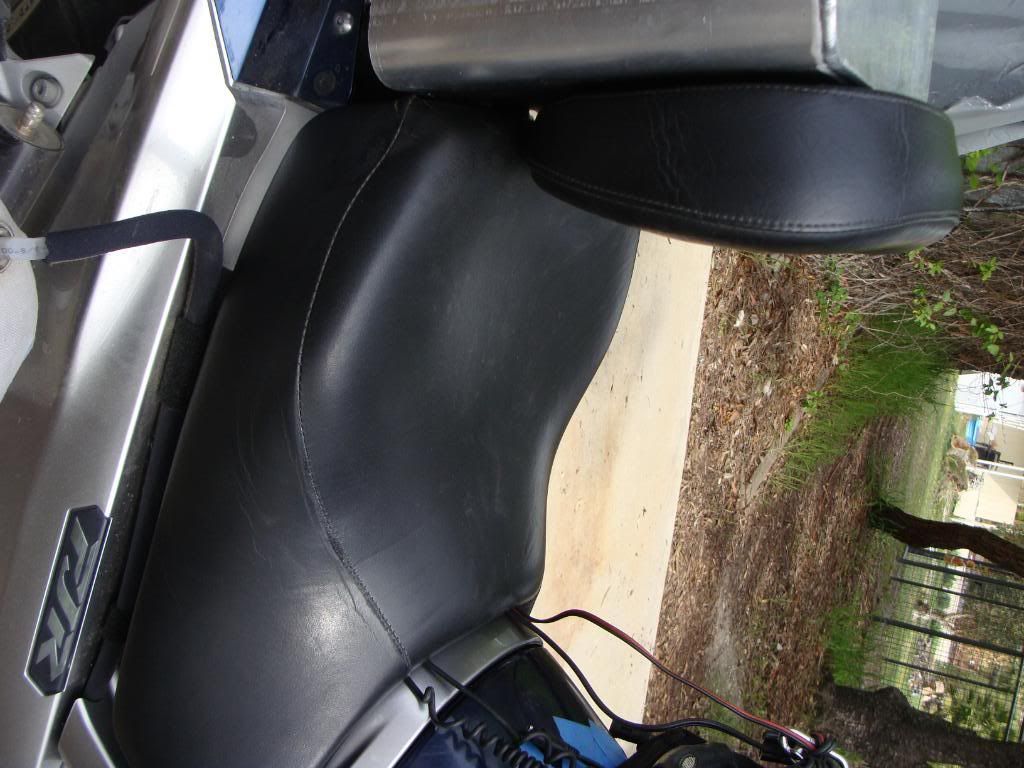I found what I think is a cool over-flow vent device. I'm never going to run an IBR, so a catch tank means nothing to me. This is a fuel pick up from a Husqvarna chain saw..
The installation -
Well now, somebody has to go riding to test this new tank... who, ME?

:yahoo:
Just in case..
My first test scenario -
Empty main tank.
With full aux tank, and empty main, see if xnfr rate was sufficient to keep motoring.
..So I siphoned the main tank (pretty difficult to completely empty it using siphon hose)
.. Filled up the aux tank
.. went riding
Evidently, even with about 1/2 to 3/8" (visual, not measured) of gas in the main, it will start to starve and stumble. I made it less than 6 miles when sputtering happened. I could keep it alive if running about 45 - 50 and turning left and right. But the end was near. Thinking of dry fuel pump destruction horror stories, I stopped. And opened the aux tank.
Looking into the main, flow was evident. So off I went, riding at 45-65 depending upon traffic. No problems, the aux was feeding the main sufficient to keep the fuel pump happy.
At 30.5 miles, the fuel gauge went from flashing empty to 1 bar.
Corresponding aux tank level - notice is has dropped from 4/4 full to this -
At one point in time, I saw 2 bars on the fuel gauge. Then I wicked it up and had some fun in straights and corners, running at triple+ and pushing hard. Then, the blinking gauge came back on - I guess this means I was consuming more than delivering. (but I was pushing it, hard)
Back at the Hondarosa, I measured fuel height in main and aux
Main = 1 5/8
Aux = 1 3/8
Opened aux valve, weed whacked a mountain, came back later. BTW, FJR on center stand..
Main = 1 3/4, Aux = 1 3/8 to 1 1/4, depending upon my measuring 'technique'. Call it half way between.
I then siphoned the main -
Main = 1/2" at test start
with bike on center stand, 40 minutes,
Main = 1/2.
Bike on side stand - no change.
Evidently, once you're down to 3/8 to 4/8 in main or aux, you're a done doodle.
So what is learned from all this?
1. The aux tank will flow (given *my* configuration) down to 1/2"
2. If the main is empty, the full aux flows adequately to maintain motoring speeds (worst case scenario - who is stupid enough to run the main completley dry before opening the aux?

)
3. At some point in time, at low levels, the aux and main 'equalize'
The next test?
Given a nearly empty main and aux, while connected, how far can one go?
That will be tomorrow.
I hope this helps -
and will be very curious to see what others experience, especially those that run 5/16" line not 1/4" like I have. Per SkooterG's post, all gravity tanks with minimal head pressure have 'issues', requiring a learning curve of what does and does not work.
From what I've seen today, Joe2lMakers tank feeds the main as it should!
I'll test more soon.
































































